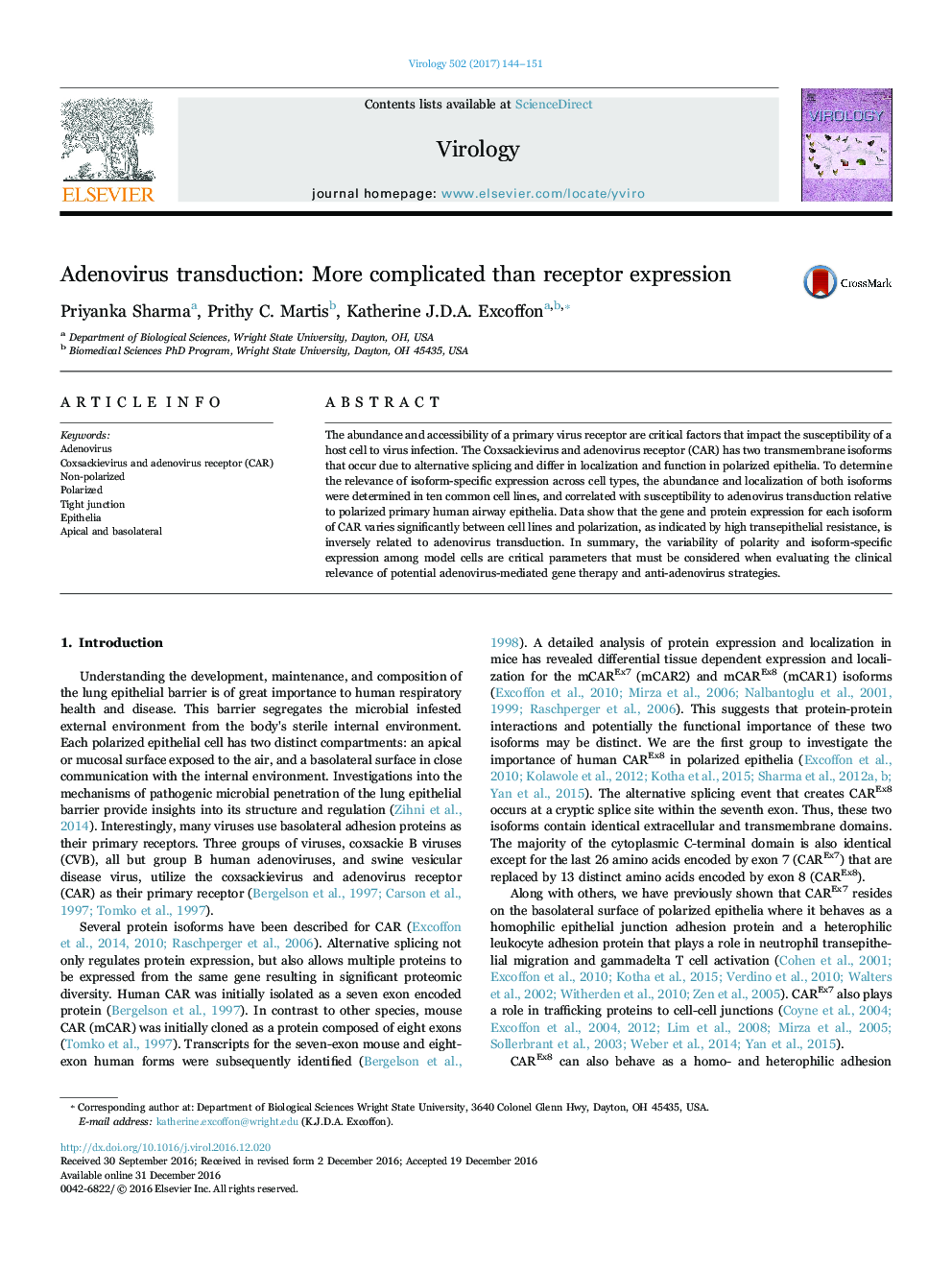| Article ID | Journal | Published Year | Pages | File Type |
|---|---|---|---|---|
| 5675173 | Virology | 2017 | 8 Pages |
â¢Variability in CAR expression in model cell lines is compared to primary epithelia.â¢Polarization reduces adenovirus transduction efficiency.â¢Localization of CAR transmembrane isoforms impacts adenovirus transduction.
The abundance and accessibility of a primary virus receptor are critical factors that impact the susceptibility of a host cell to virus infection. The Coxsackievirus and adenovirus receptor (CAR) has two transmembrane isoforms that occur due to alternative splicing and differ in localization and function in polarized epithelia. To determine the relevance of isoform-specific expression across cell types, the abundance and localization of both isoforms were determined in ten common cell lines, and correlated with susceptibility to adenovirus transduction relative to polarized primary human airway epithelia. Data show that the gene and protein expression for each isoform of CAR varies significantly between cell lines and polarization, as indicated by high transepithelial resistance, is inversely related to adenovirus transduction. In summary, the variability of polarity and isoform-specific expression among model cells are critical parameters that must be considered when evaluating the clinical relevance of potential adenovirus-mediated gene therapy and anti-adenovirus strategies.
Graphical abstractGraphical Abstract: Differential accessibility of CAR for adenovirus infection of non-polarized or polarized cells. A. CAREx7 and CAREx8 are exposed and accessible to mediate the infection of incoming adenovirus in non-polarized epithelia. B. CAREx7 localizes beneath the tight junctions at the basolateral surface of polarized epithelia and is not accessible to incoming adenovirus. C. CAREx8 localizes at the apical surface and in the recycling endosomes of polarized epithelia. Apical CAREx8 allows adenovirus to bind, internalize, and infect cells from the apical surface of polarized epithelia.Download high-res image (330KB)Download full-size image
